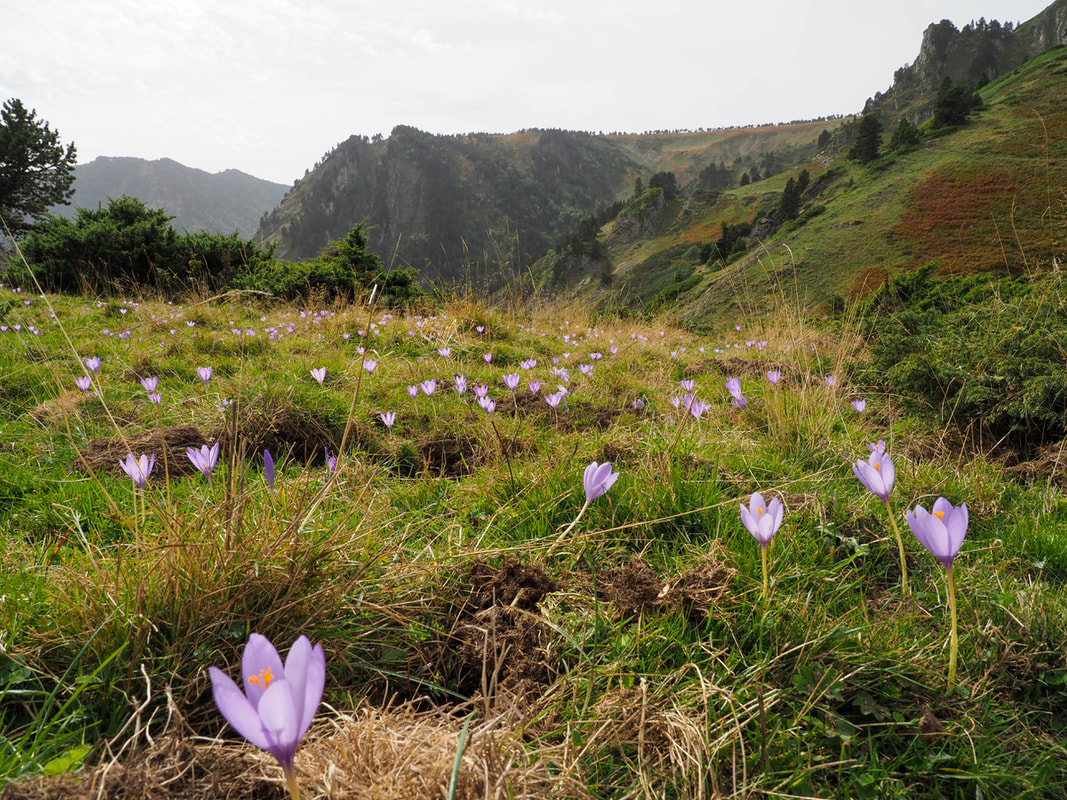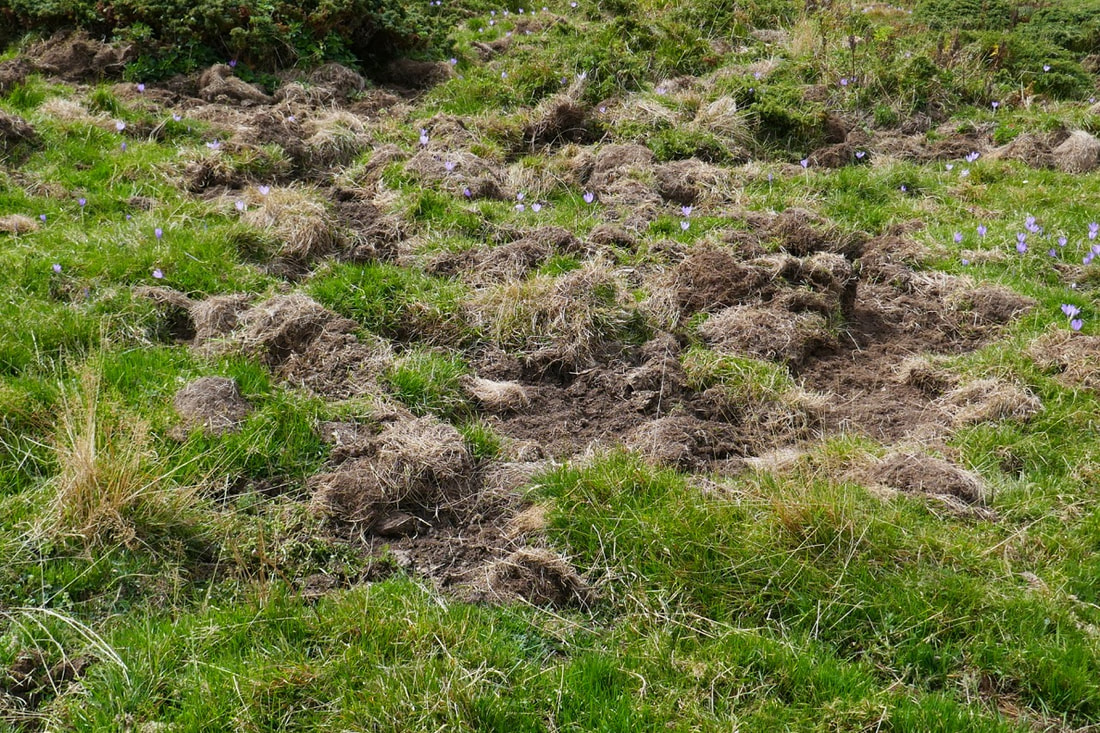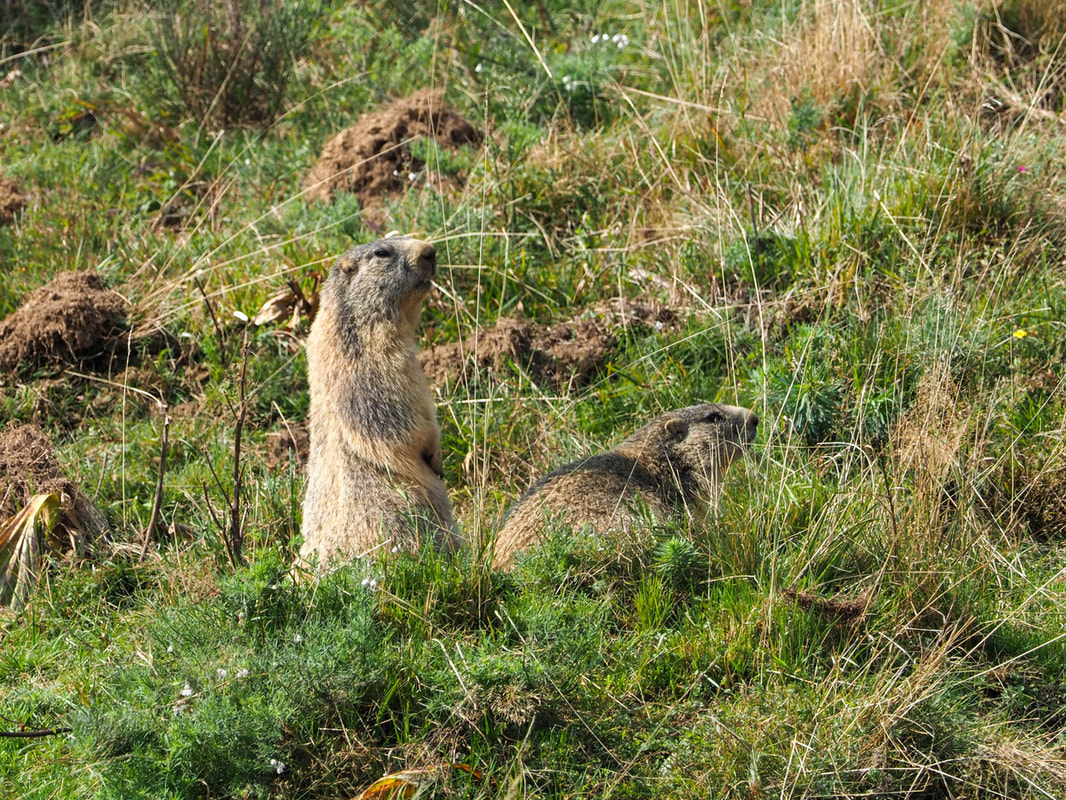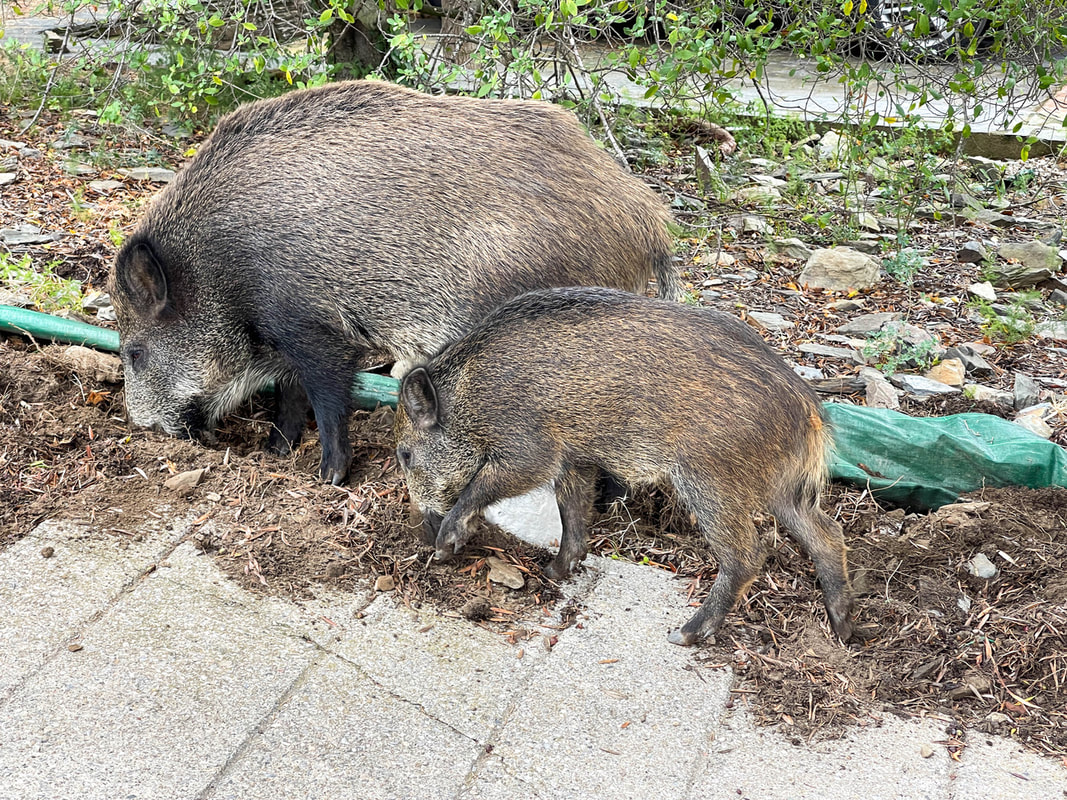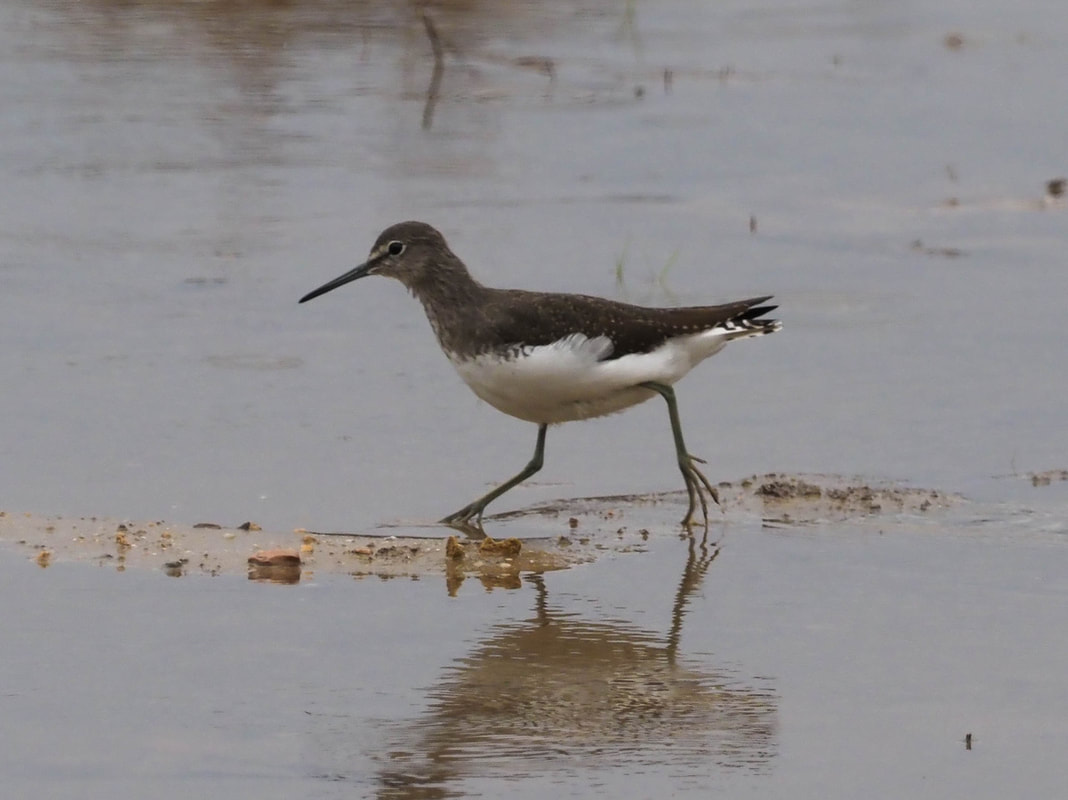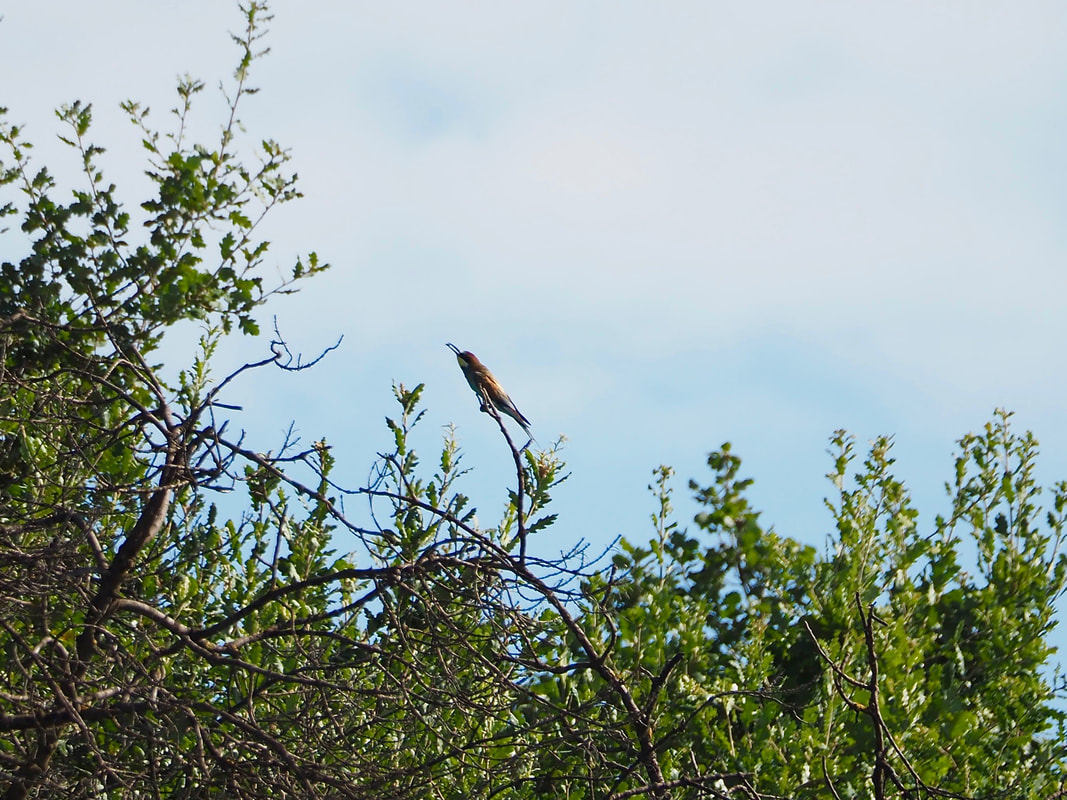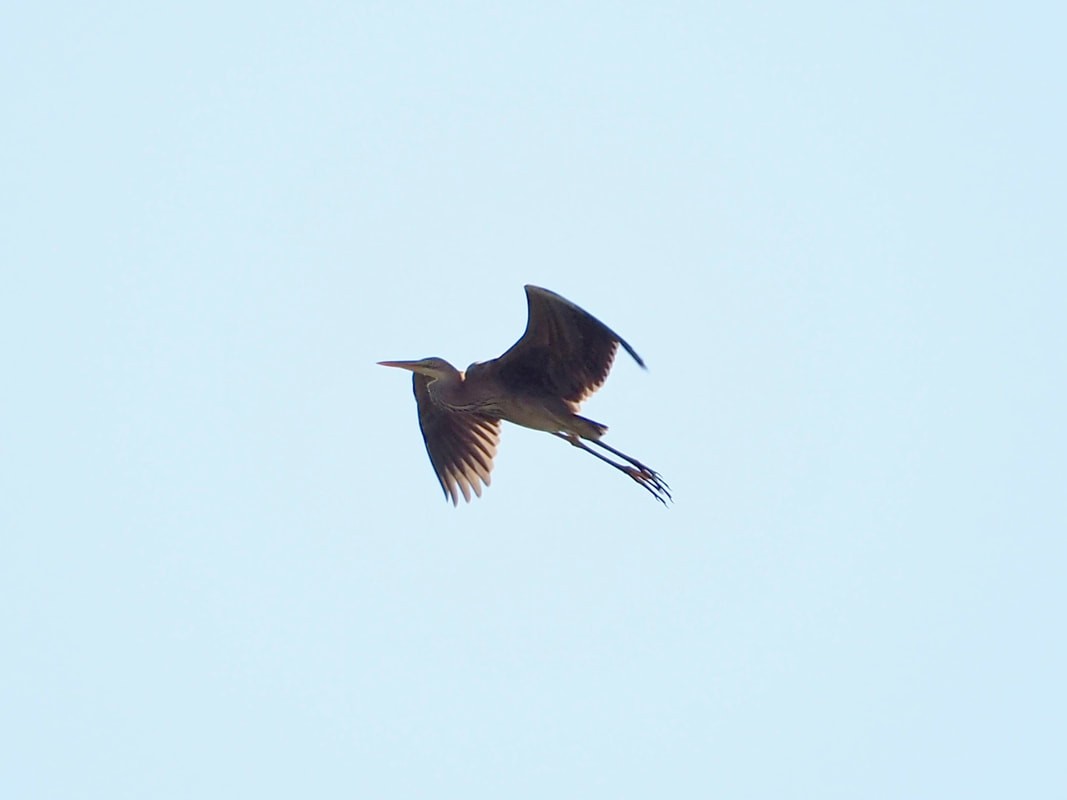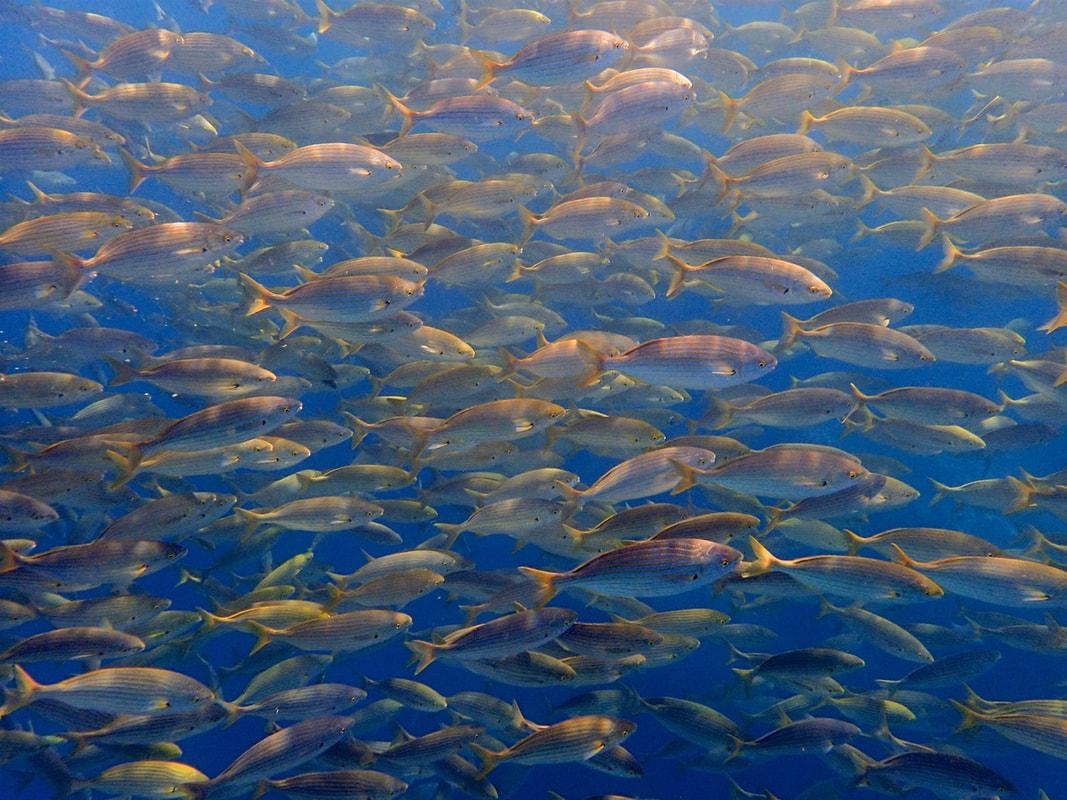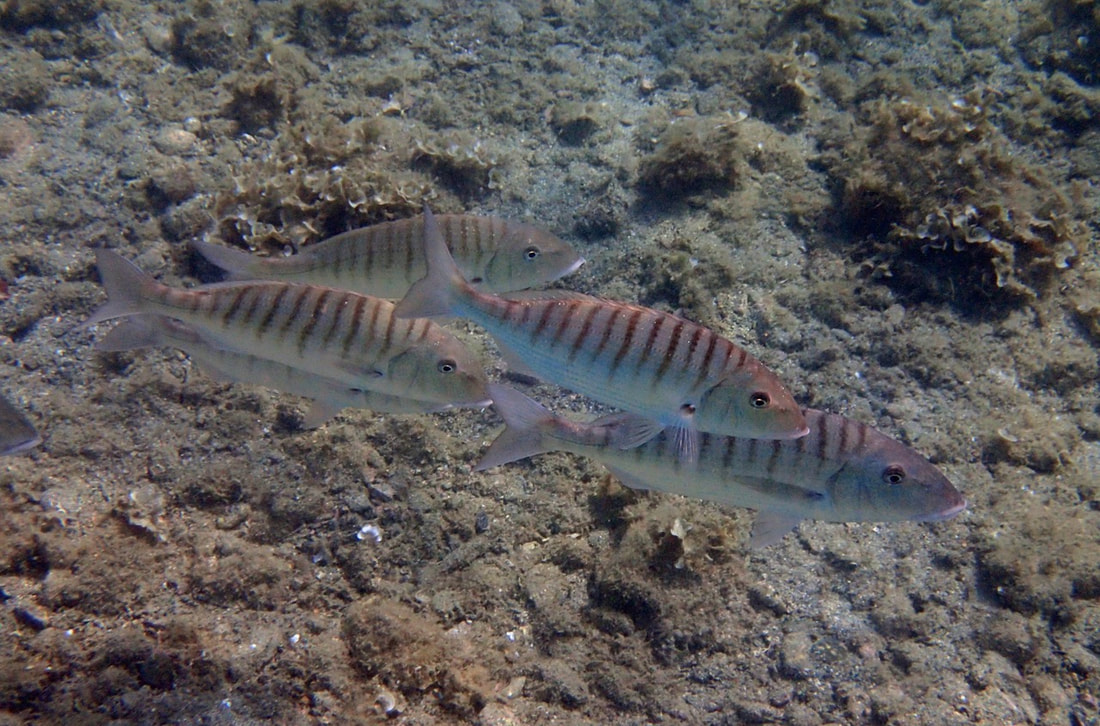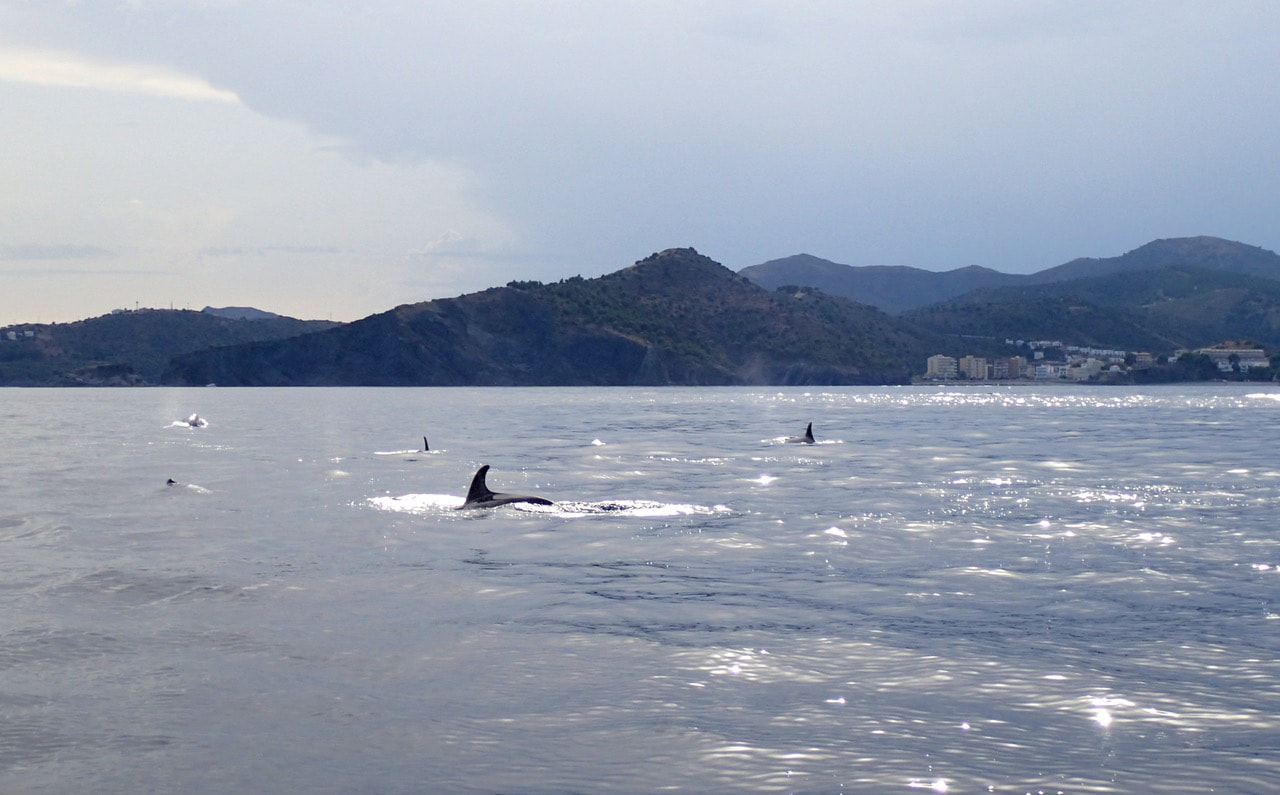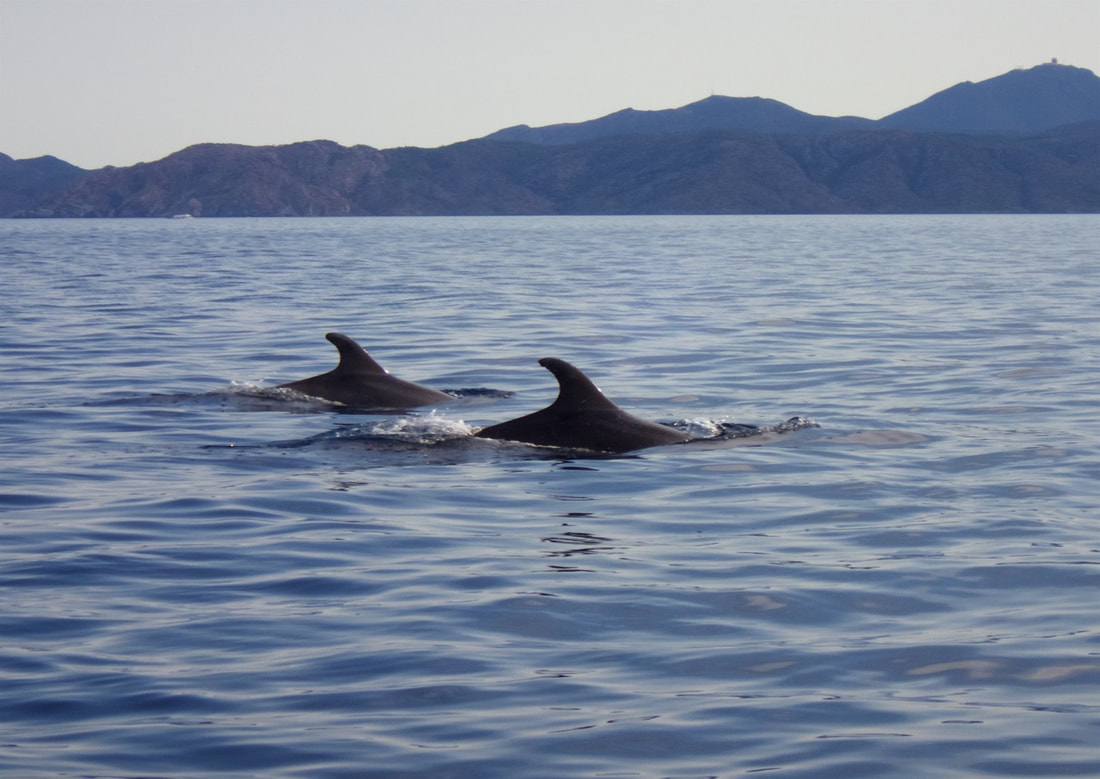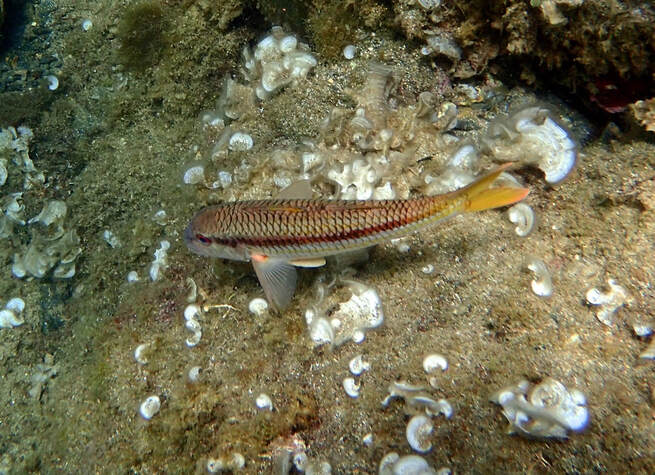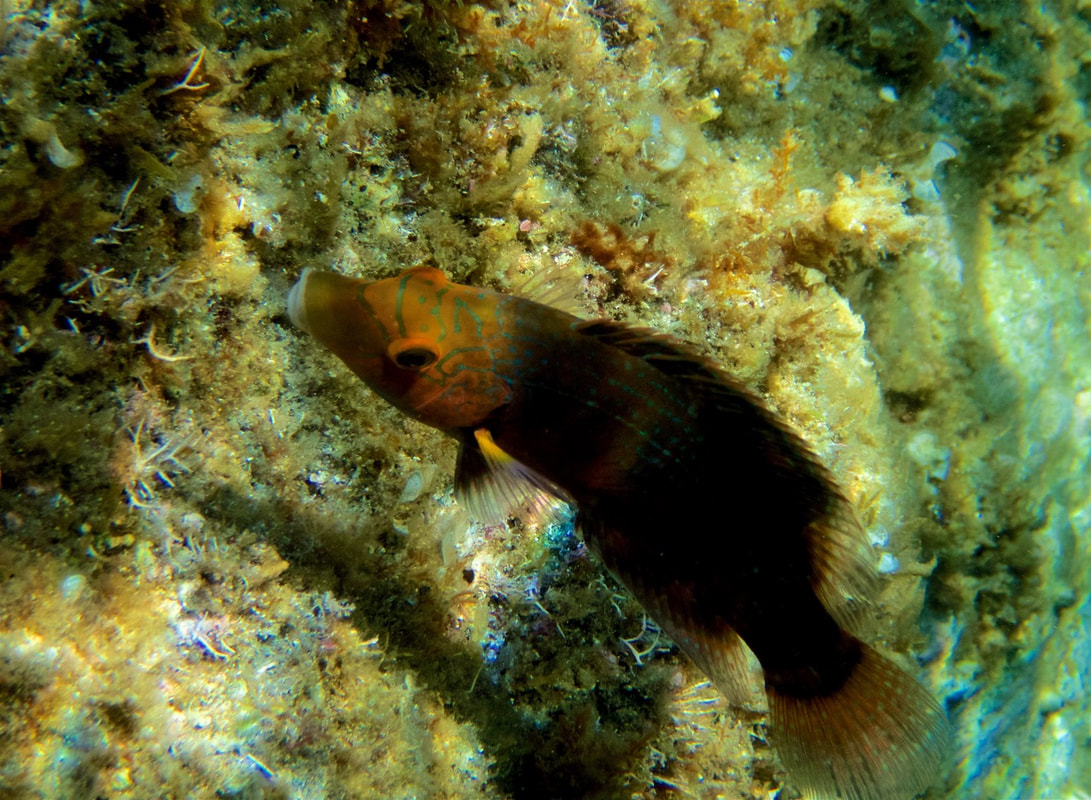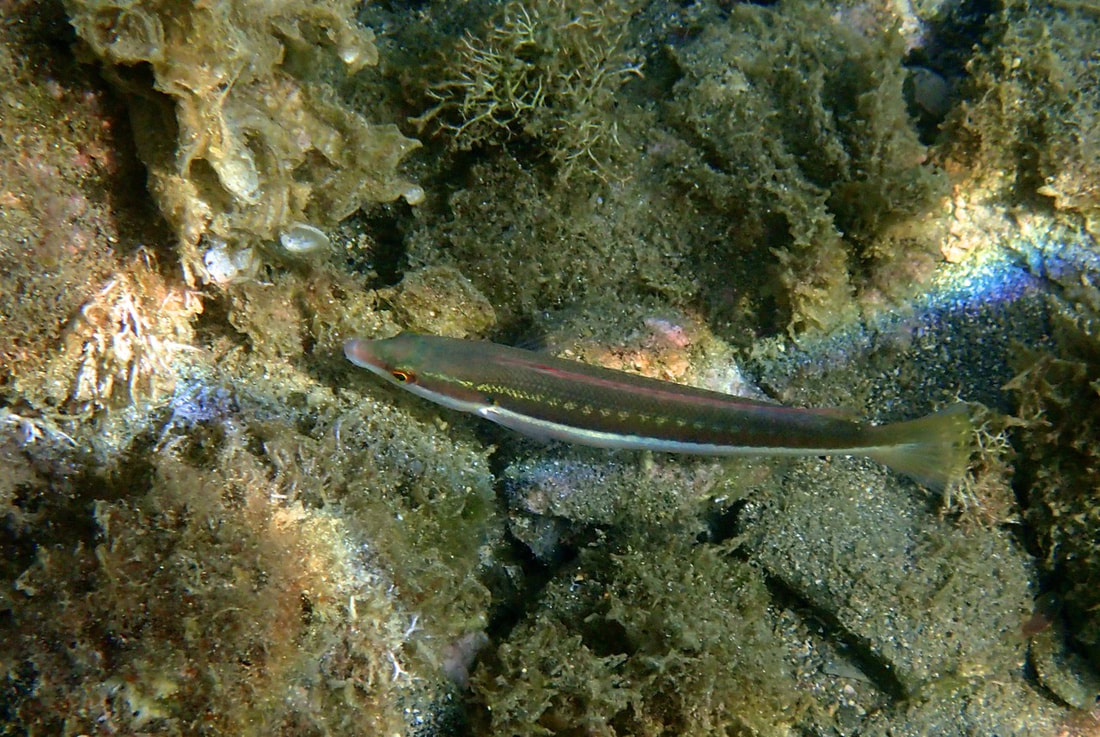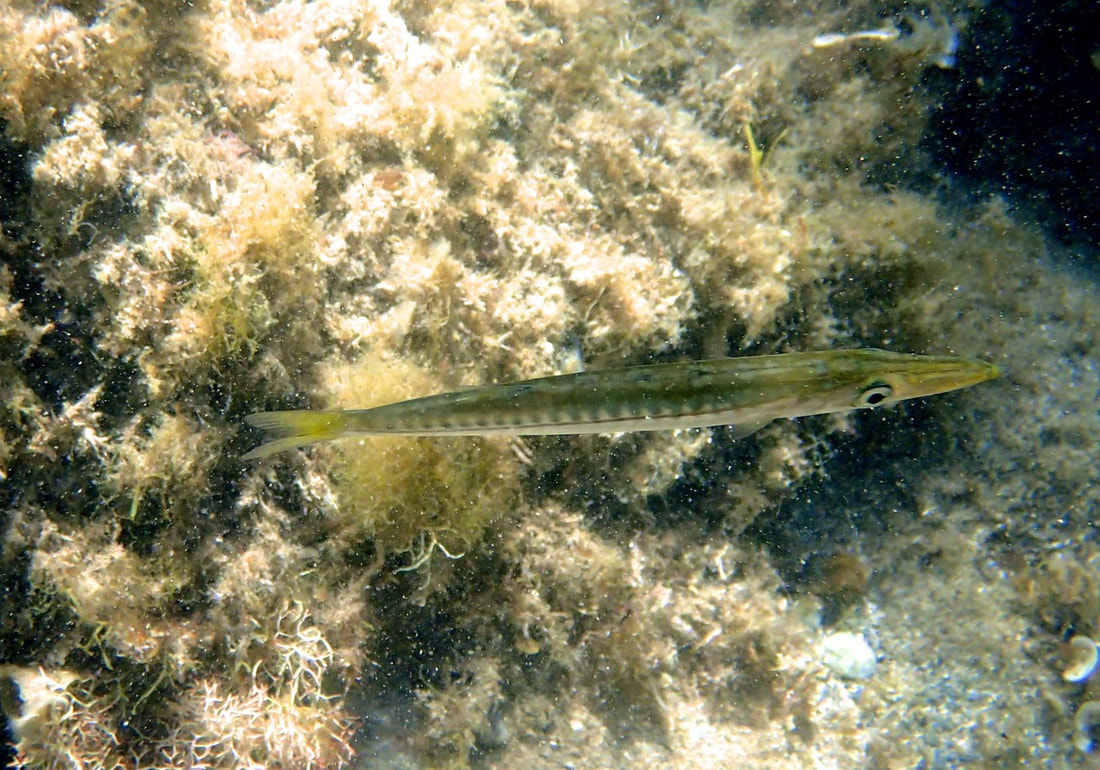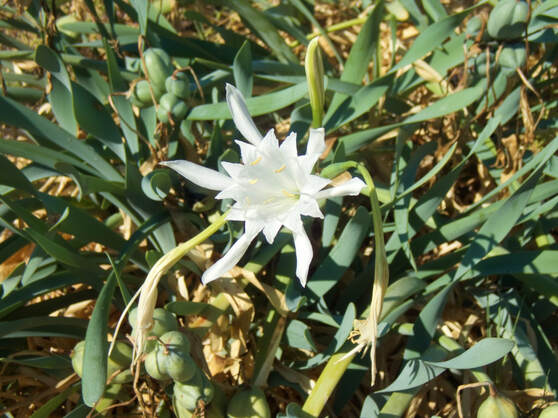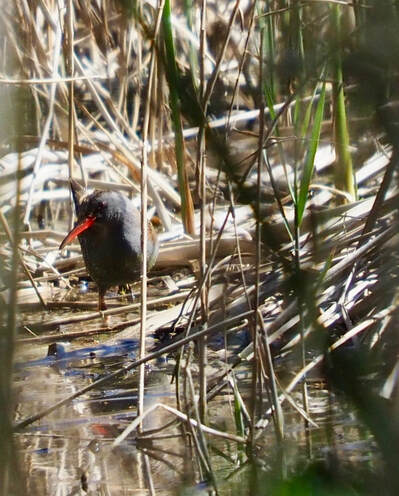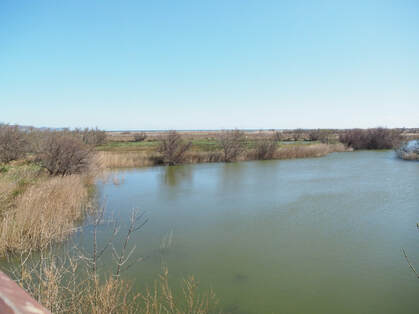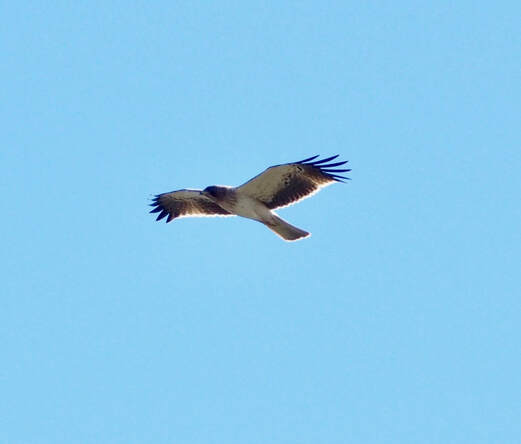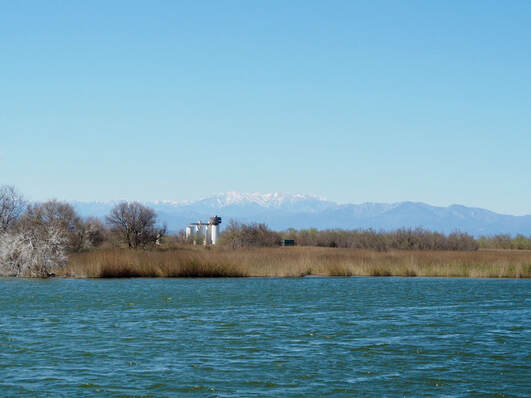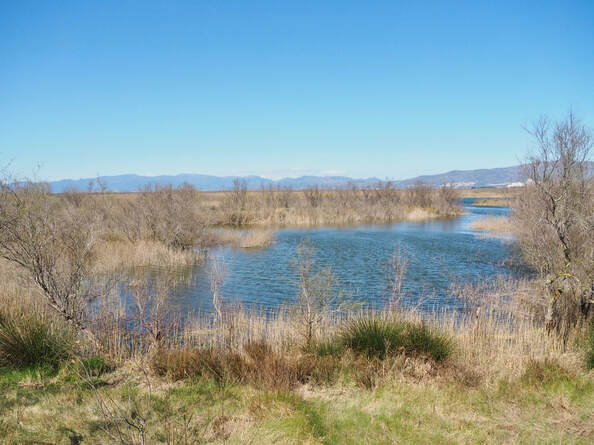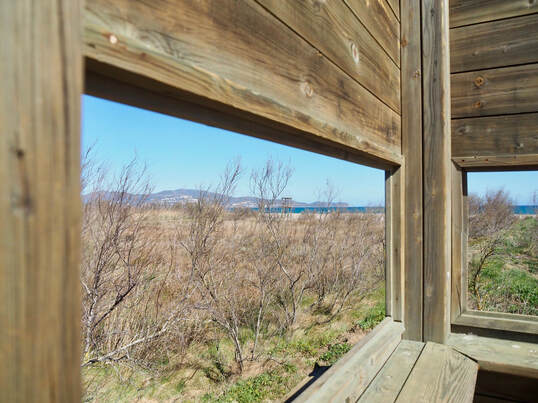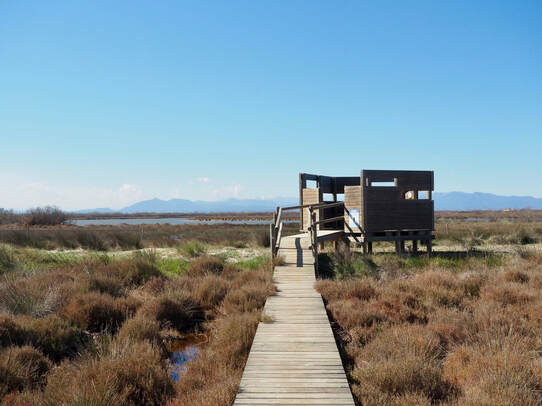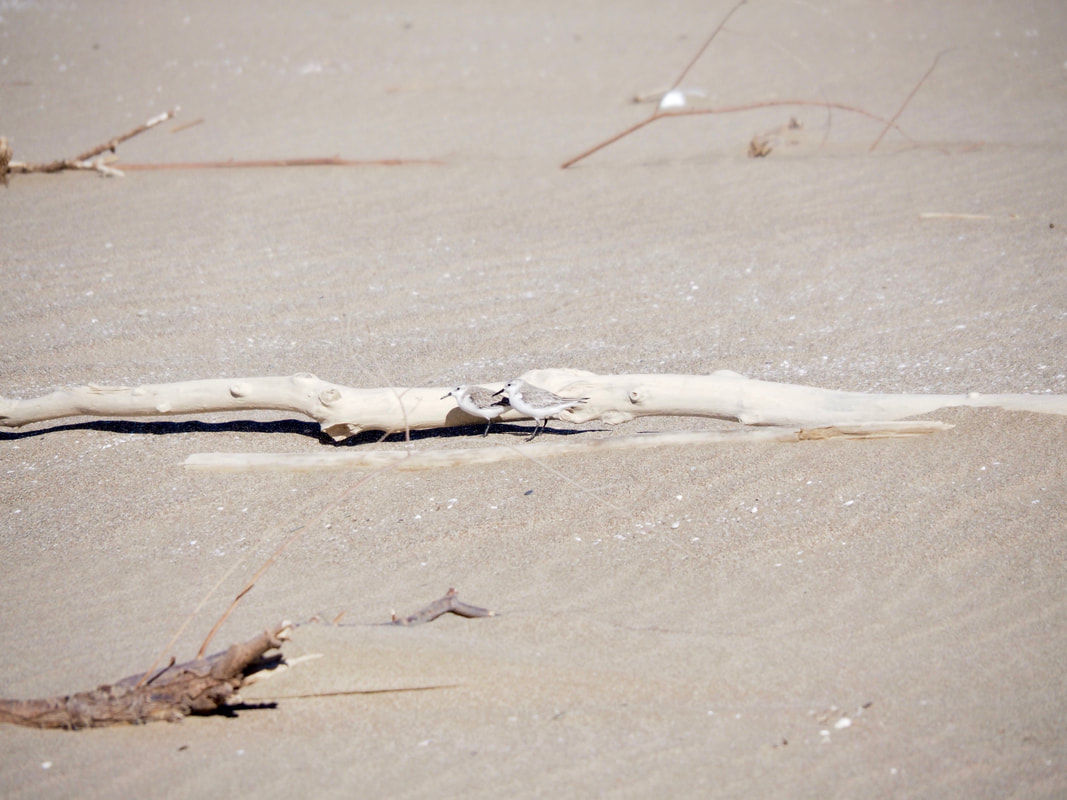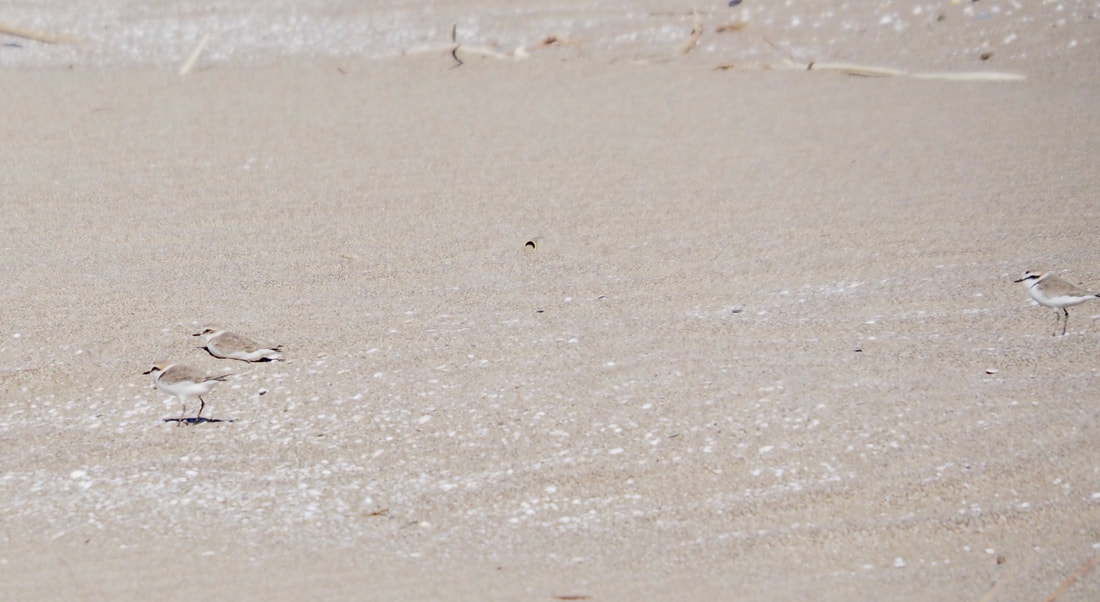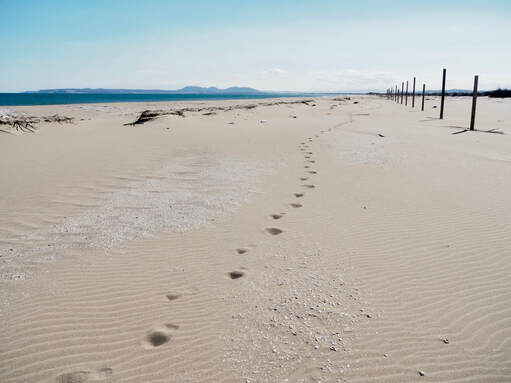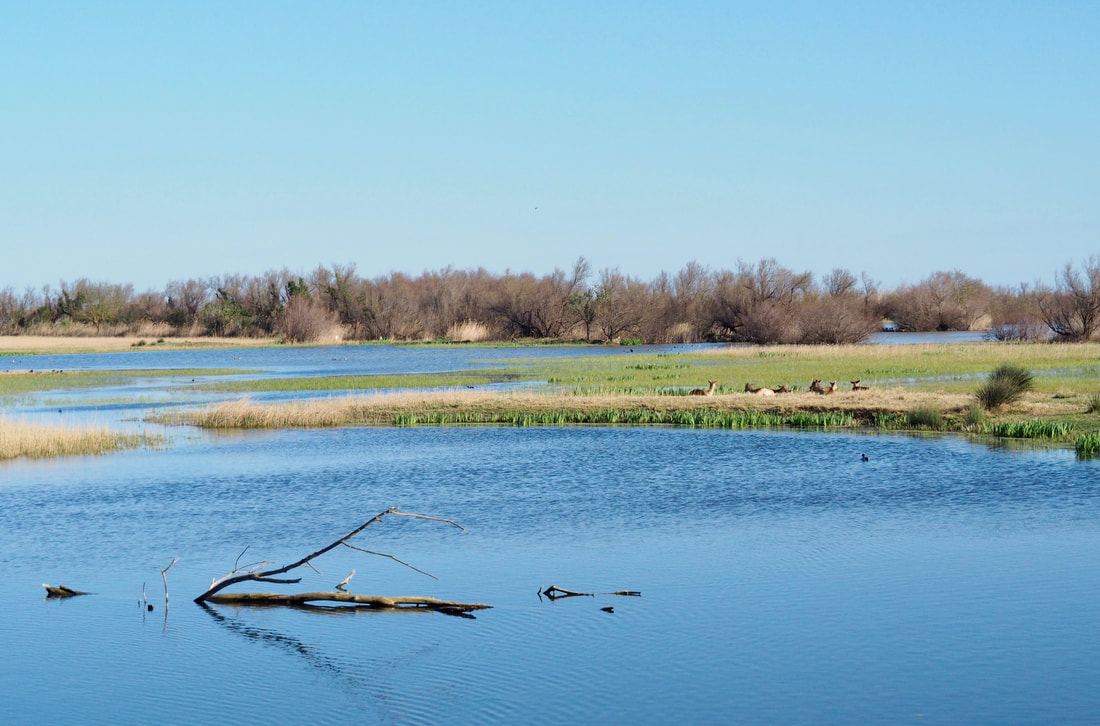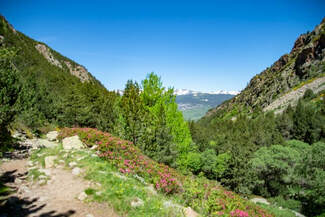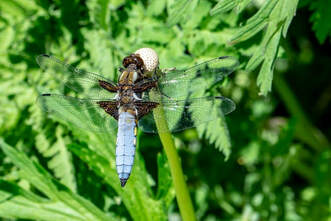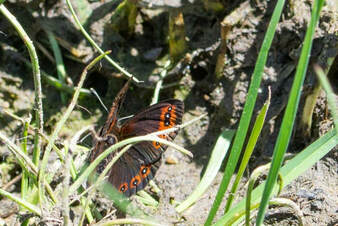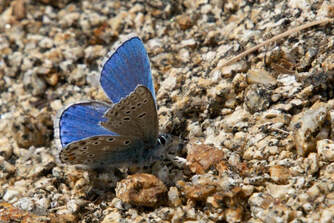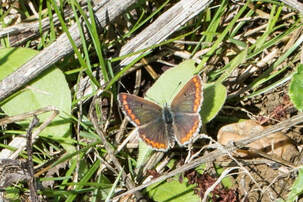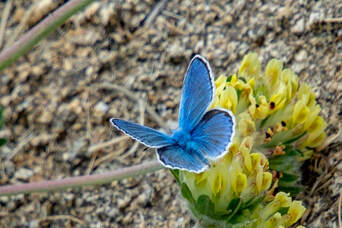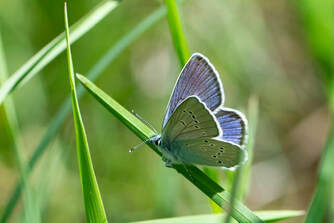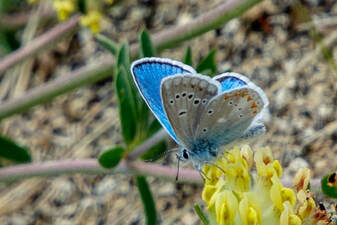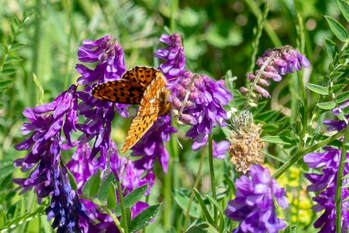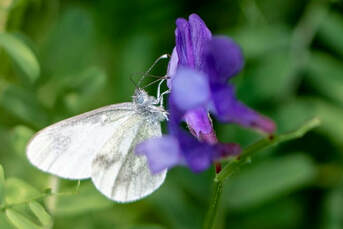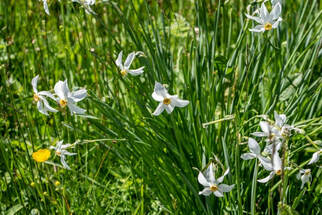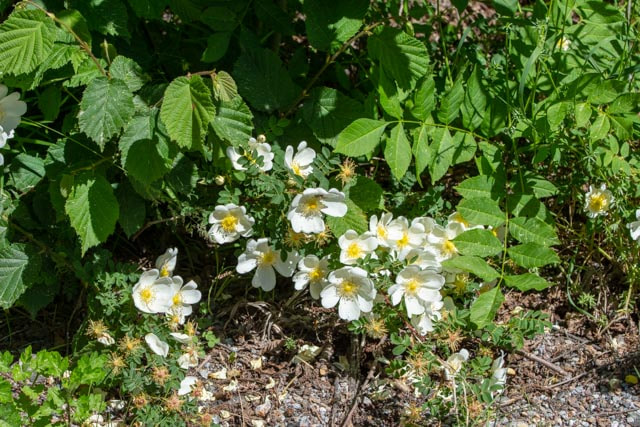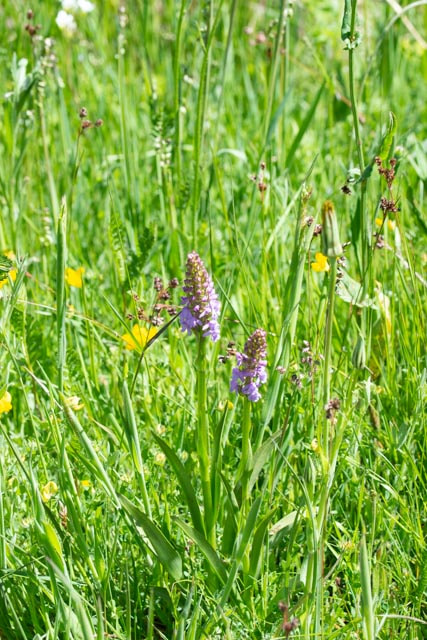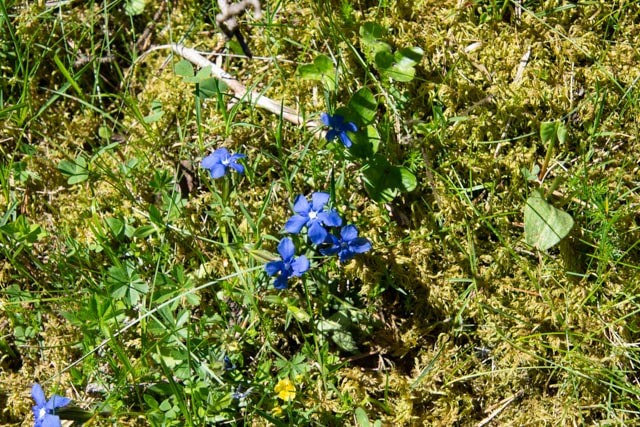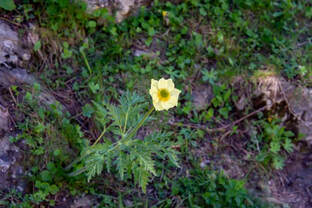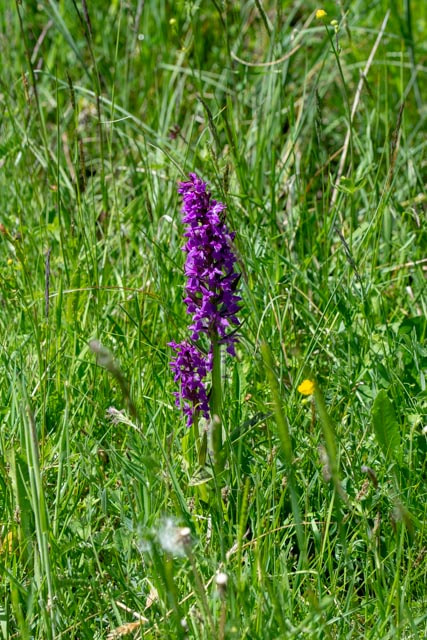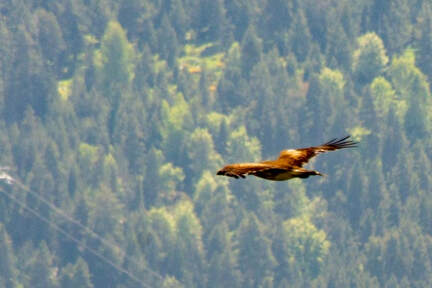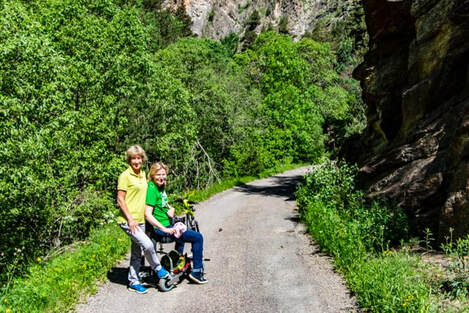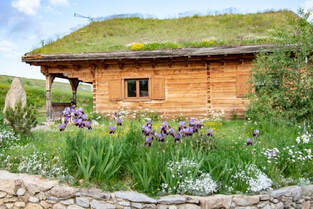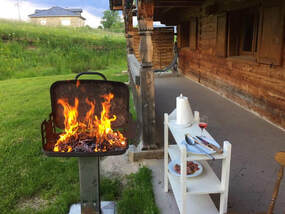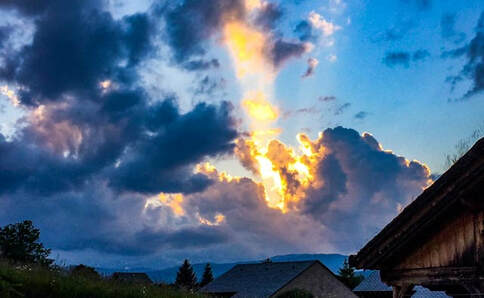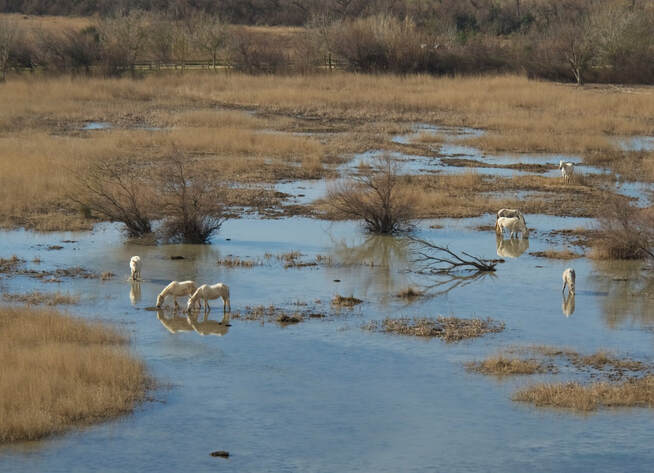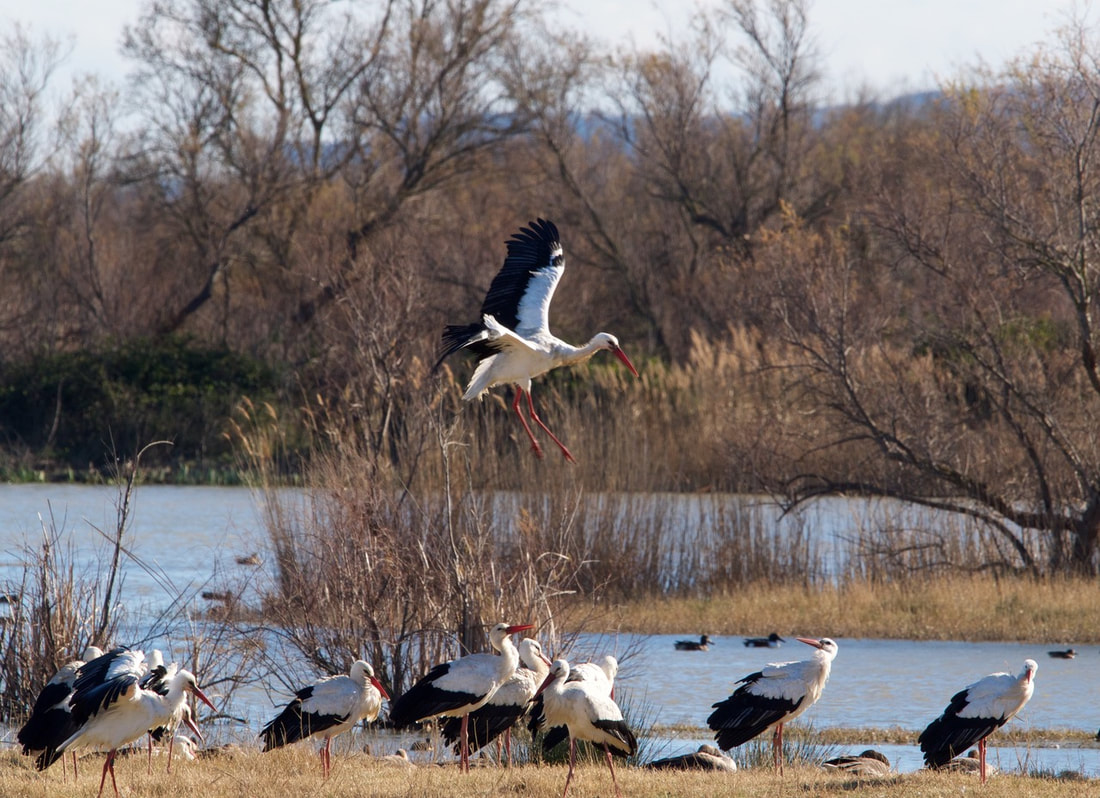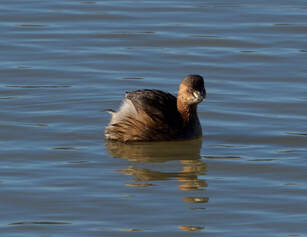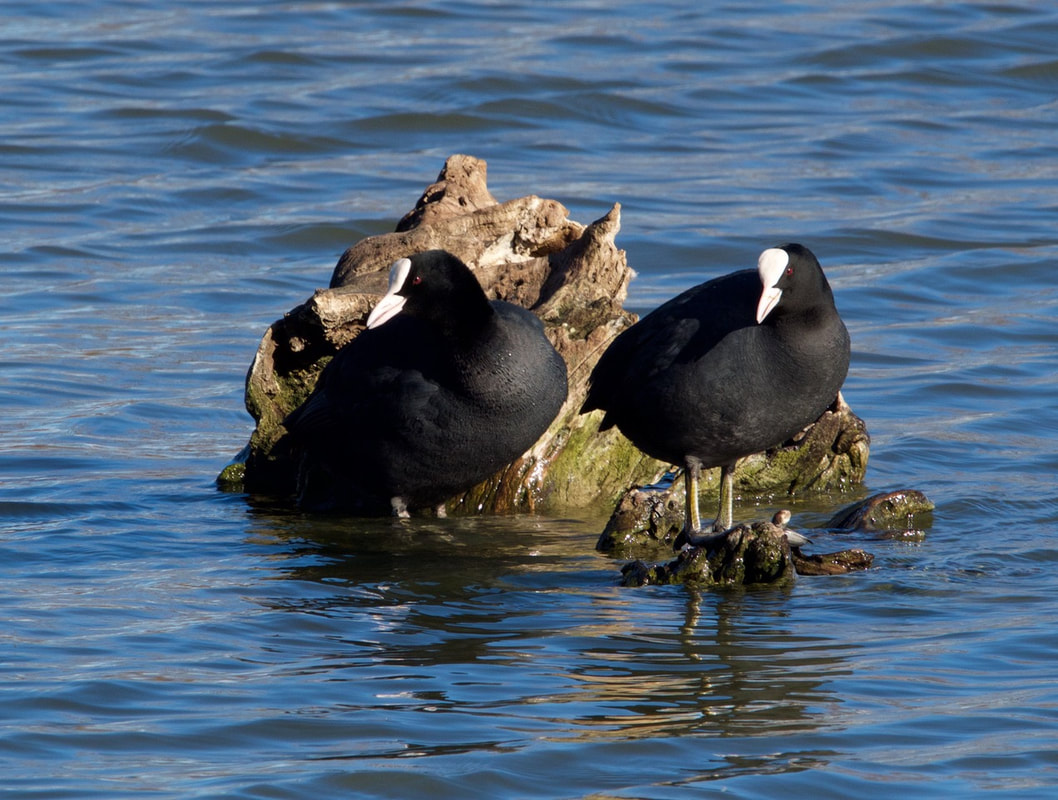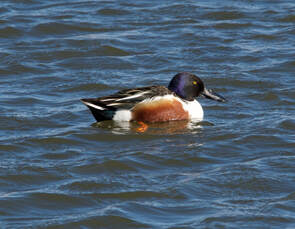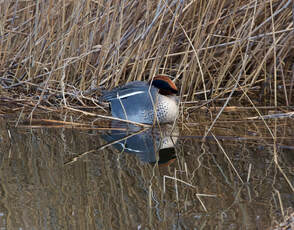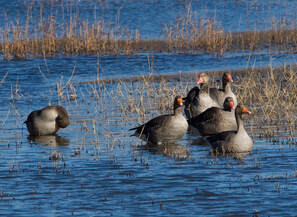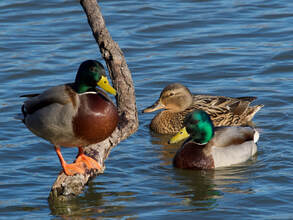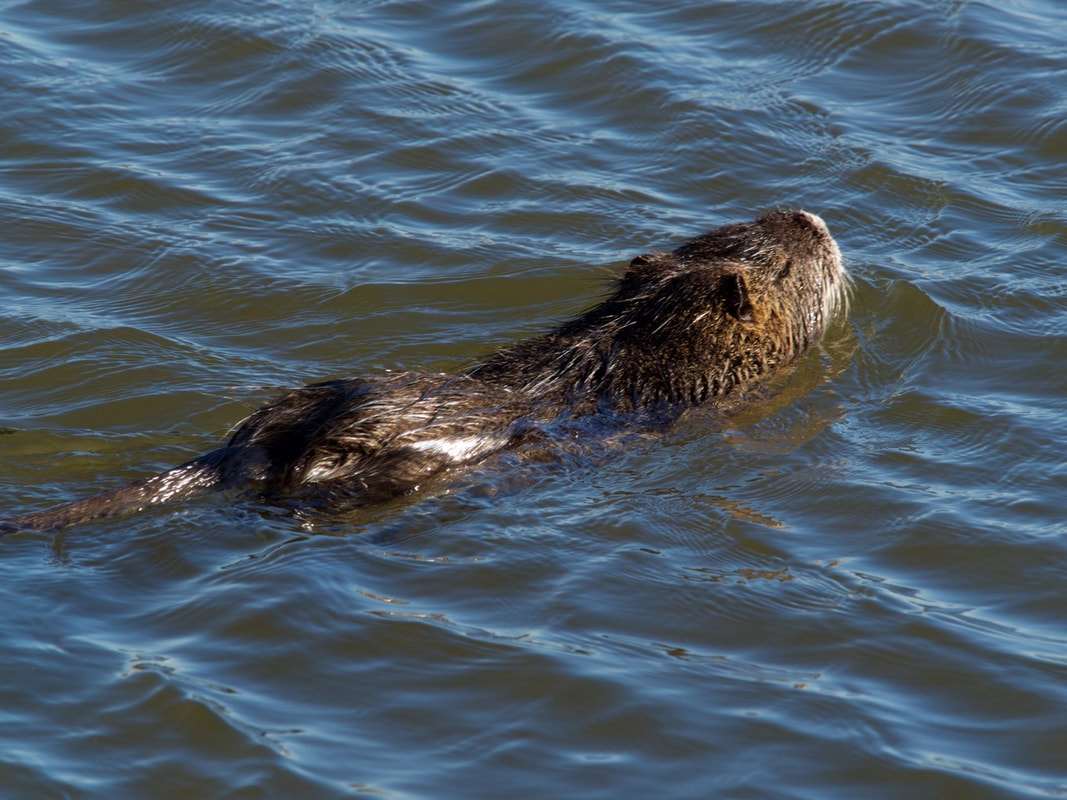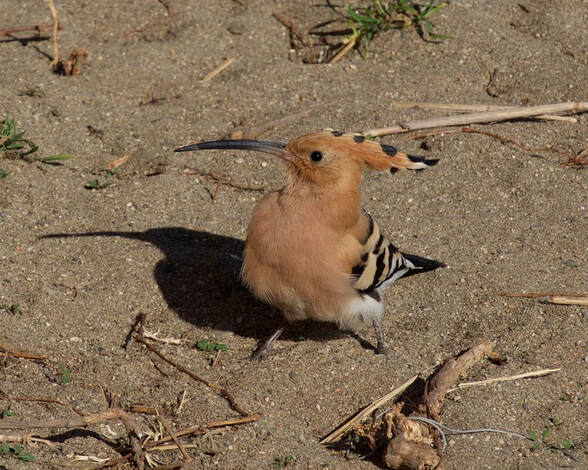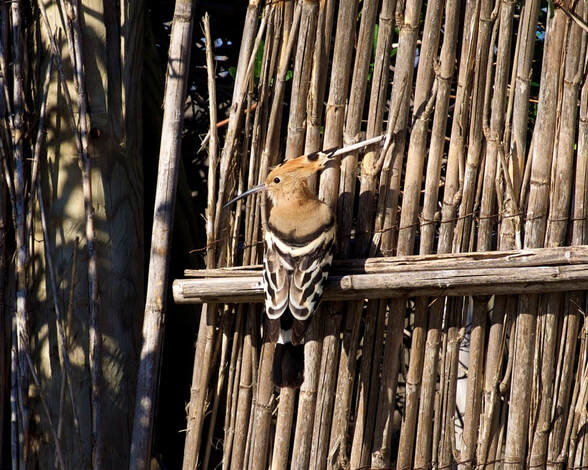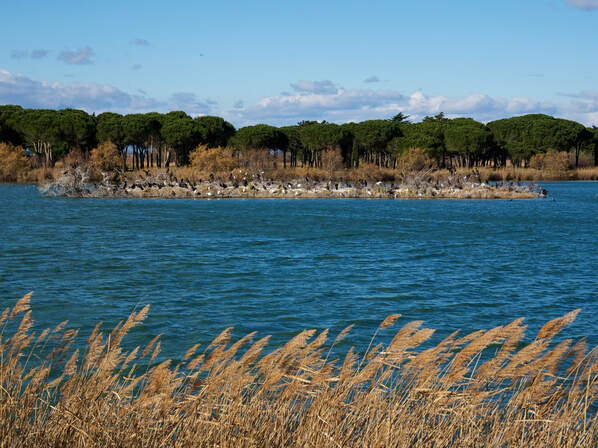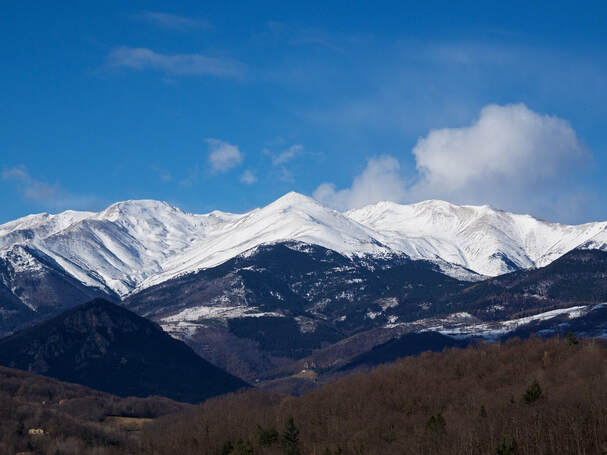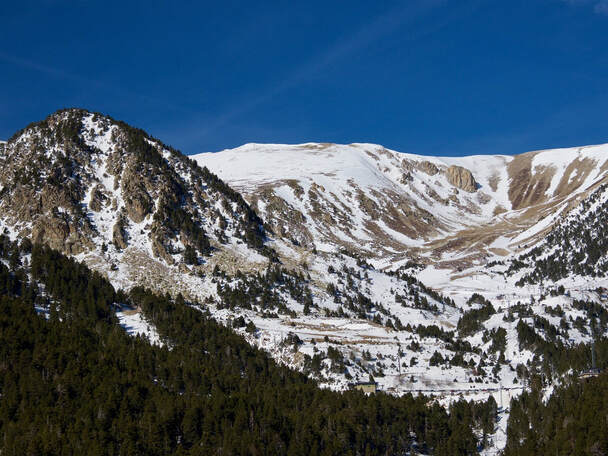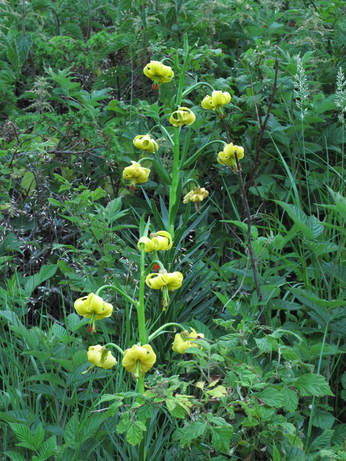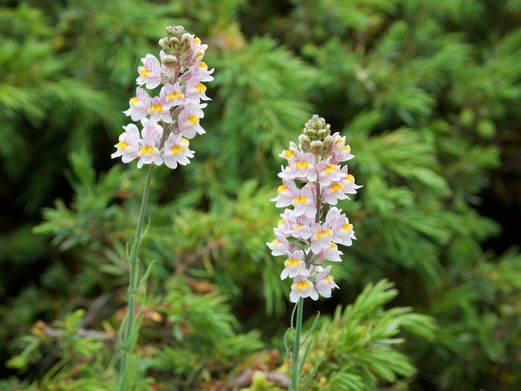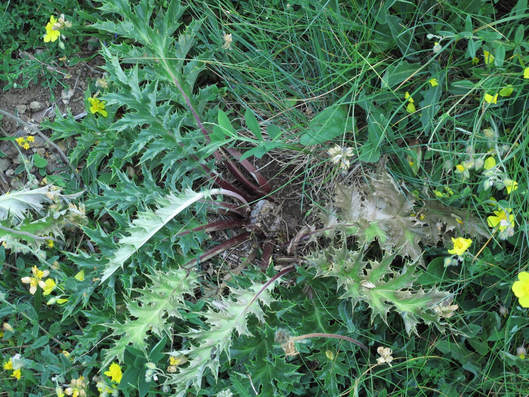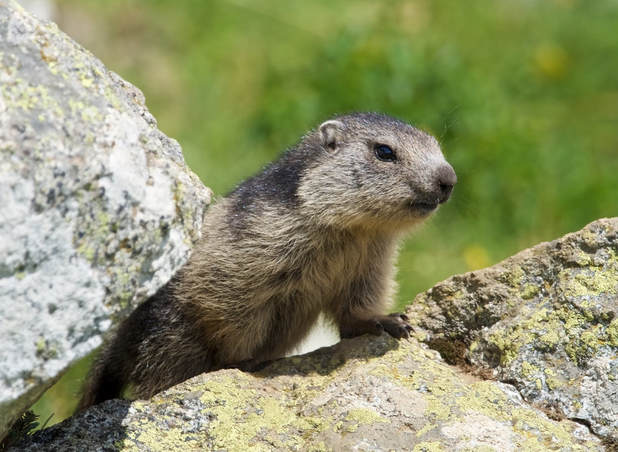During our two months in France, we had some nice sightings; they started, rather unusually, on the way down through the country on the motorways. Some way south of Clermont Ferrand, a farmer was cutting hay in a small field and there were at least six storks in the cut section – were they perhaps looking for frogs or even mice? The next morning, there were vultures above the road out from Millau, and as we emerged out on to the plain well before Béziers, a flash of gorgeous colour – blues, turquoise, browns, almost a pink – must have been a roller; our first in Europe.
We made a short trip west from PO, right into the Pyrenees, revisiting one of our favourite high cols. Again, high up, was something we had never really seen, such a show of the autumn crocuses that we had to call it a wildflower meadow. We stopped to photograph, and to appreciate its beauty.
Over the summit, on the narrow road downhill, we had to stop to let a young fox cross; he seemed quite unworried by our vehicle and wandered over to the verge on our side. A car came up the hill and also slowed to a halt. Despite the noise of the engines, the fox cocked his ears, looked into the grass on the roadside, did a leap and emerged with a mouse, which was apparently very tasty. He then slowly strolled off the road…
The next day we took another, even narrower road, uphill to a bergerie we knew; last time we had been there, three years ago, there had been a berger and lots of sheep. Now, while it was clear that cows had come that way, the bergerie was shut up, and there were no sheep beside the road. To our surprise, however, there were marmots, right beside the narrow strip of tarmac. They moved a bit as we stopped, but one stayed in the open as sentinel, and Martine managed to photograph it from the comfort of the van.
And when we made one of our short jaunts into Spain, we were in for another surprise; we stayed a night in an attractive seaside hotel in Port Lligat, and as we drove down the steep road between stone walls into the very tidy hotel carpark, there were three sangliers, mother and two well-grown babies, rooting around in what were meant to be tidy strips of flowers and shrubs at the entrance to the building.
While we were in Spain, we visited, as ever, the wetland area we casually call ‘the Emporda’; despite recent thundery downpours it was, in fact, very short of water, and almost devoid of birds. We did, however, see two very handsome snipe and one species which was new to us, a green sandpiper. All the local storks had left, bar one which I happened to see flying about on its own as we arrived.
